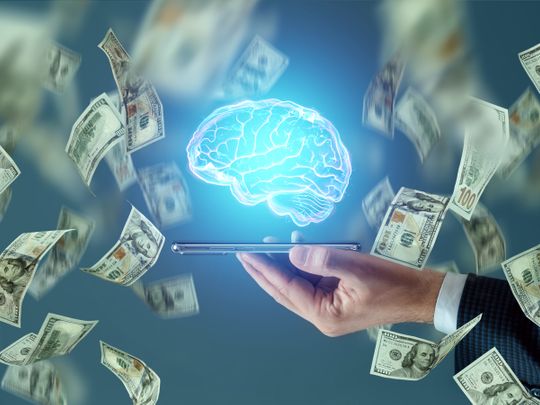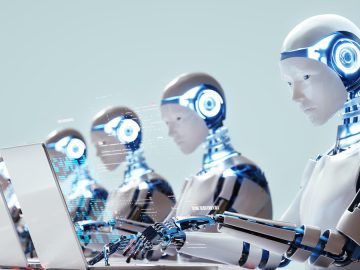AI’s ability to analyse vast datasets at lightning speed is one of its most compelling advantages. Traditional investment analysis often involves sifting through reams of financial statements, news articles, and market data, a process that is not only time-consuming but also prone to human error and bias.
Susheel Sethumadhavan, partner, Digital and Analytics at global management consulting firm Kearney Middle East and Africa, explained how humans are limited to our innate human ability, which just simply can’t surpass the speed and complexity of technological software.
“Investors lack the decision-intelligence needed to decode the complexity, to predict the future, and direct their capital at the targets that have the highest probability of delivering impact. Opaque and subjective, they rely on the analysis and sentiment of a small number of people. AI systems excel at processing vast amounts of data and detecting complex patterns, allowing for the identification of investment opportunities and risks with historic precision,” said Sethumadhavan to Gulf News.
AI algorithms can process real-time data, news articles, social media sentiment, and historical trends simultaneously to identify patterns and correlations that might elude even the most experienced analysts, explained Musa Khalfan, founder and CEO of financial services company MK Investments.
“Recent studies show that AI-driven trading systems can analyse up to 10,000 trading signals per second, leading to more efficient and profitable trading strategies. Additionally, AI’s capacity for continuous learning means these systems are constantly improving, adapting to market changes in real-time,” said Khalfan.
For instance, AI can detect subtle market signals that indicate potential stock movements, allowing for more informed and timely decision-making. This capability can significantly enhance portfolio performance by identifying opportunities for profit and risk management.
AI’s capacity for continuous learning means these systems are constantly improving, adapting to market changes in real-time
– Musa Khalfan
Can AI forecast market trends and price fluctuations?
AI’s predictive analytics can forecast market trends and price fluctuations, giving investors a competitive edge. AI’s automation capabilities also extend to executing trades. By adhering to pre-programmed rules and strategies, AI systems can execute trades at optimal times, potentially maximising returns and minimising losses. This is particularly beneficial in high-frequency trading, where split-second decisions can make a substantial difference.
Sethumadhavan is looking at the matter from an efficiency and productivity angle. When asked about the implications of using AI in general investment, he pointed out a crucial point, post pandemic economic megatrends have resulted in more funds and fewer opportunities, which in turn intensified competition levels making human capital seem like a hindering factor in pursuit of efficiency. “However, funds face significant inefficiencies, particularly in their use of human capital. Much of their time is consumed by non-core tasks such as document processing, data analysis, process management, conducting research. This is where AI can/is playing a major role across the investment journey,” he said.
According to Vijay Valecha, Chief Investment Officer at Dubai-based trading and brokerage firm, Century Financial, when talking about the impact of AI on personalised investment, he explained that there are two main aspects involved, testing and time. He said traders back-test historical data, which means predicting how the strategy might perform in the future based on past trends.
However, sometimes a strategy that looks good in back-testing may not work as well in real trading conditions. He further said that a strategy’s success varies over time; market conditions change, and what worked well in the past might not work in the future. “The entire purpose of making and using an AI model is to reconcile these differences and provide a high probability of winning the trade/investment strategy for the client,” said Valecha.
While a trading strategy may seem effective based on historical data, its true reliability can only be confirmed by how well it performs in real-time trading and how it adapts to changing market conditions.
AI’s ability to remove emotional biases from trading decisions is a significant advantage. Fear and greed, common pitfalls for human traders, do not influence AI systems, leading to more rational and consistent trading behavior.
“With a human being, there are physical limitations like personal and emotional bias, over-analysing, and proving one’s point despite what the market signals. With AI, the primary purpose is to imbibe this entire culture of discipline and fine-tune it with the actual past, observed, and expected future high-probability parameters,” added Valecha.
AI’s ability to remove emotional biases from trading decisions is a significant advantage.
The downside: Over-reliance and market volatility
However, the integration of AI in investment is not without its drawbacks. One major concern is over-reliance on AI systems. While AI can process information rapidly, it may not fully comprehend complex, unpredictable events such as geopolitical tensions, regulatory changes, or sudden economic shifts. In such cases, human intuition and experience remain invaluable.
AI-driven trading can exacerbate market volatility. Algorithms reacting to the same data in real-time can lead to rapid buy-and-sell actions, causing significant price swings. This phenomenon, known as “flash crashes”, has raised concerns about the stability of markets increasingly dominated by AI. For example, the infamous “flash crash” of 2010 saw the Dow Jones Industrial Average plummet nearly 1,000 points within minutes, partly due to automated trading systems, according to the corporate finance institute.
Balancing AI and human expertise
Given these potential risks and benefits, the question arises: Should investors rely solely on AI for developing personalised investment strategies? The consensus among experts suggests a balanced approach. Combining AI’s analytical power with human expertise can yield the best results.
While AI provides valuable insights and efficiency, human oversight ensures that complex, nuanced decisions are made with a comprehensive understanding of broader contexts.
Financial advisors can leverage AI tools to enhance their recommendations, but maintaining a human touch ensures that clients’ unique goals, risk tolerance, and personal circumstances are adequately considered. In this hybrid model, AI acts as a powerful tool rather than a replacement, augmenting human capability rather than supplanting it.
For instance, AI can assist in the initial stages of investment strategy development by analysing large datasets and identifying potential investment opportunities. Human advisors can then review these AI-generated insights, apply their judgement and experience, and make final decisions that align with the investor’s objectives. This collaborative approach ensures that the strengths of both AI and human expertise are maximised.
Valecha said that it is improbable that AI will replace human experience entirely. “The human tendency to invest and trade in something has always been driven by the core personality emotions of fear, greed, herd mentality, etc. We don’t seem to have reached a stage where robots and AI have replicated this to the fullest,” said Valecha.
Sethumadhavan as well has a similar view. When he was asked about how human power and AI should co-exist he said, “Funds that build a solid foundation of synergy between AI platforms and human expertise, will ensure faster, more precise decision-making with fewer errors, leading to higher productivity. It will generate higher impact, discovering arbitrage through predictive intelligence. Lastly, it will build resilience, anticipating financial shocks and bubbles with early signals.”

The human tendency to invest and trade in something has always been driven by the core personality emotions of fear, greed, herd mentality, etc. We don’t seem to have reached a stage where robots and AI have replicated this to the fullest
– Vijay Valecha
Real-world applications and future prospects
Several financial institutions have already successfully integrated AI into their investment strategies. For example, large American hedge funds like Bridgewater Associates and Renaissance Technologies utilise AI to analyse market data and execute trades. These firms have reported impressive returns, demonstrating AI’s potential to enhance investment performance.
AI is making personalised investment advice more accessible to retail investors. Robo-advisors, which use AI to create and manage investment portfolios based on individual preferences and risk tolerance, have gained popularity in recent years. International financial companies like Betterment and Wealthfront offer automated investment services at a fraction of the cost of traditional financial advisors, democratising access to sophisticated investment strategies.
Looking ahead, the role of AI in investment is likely to expand further. Advances in machine learning, natural language processing, and quantum computing could lead to even more powerful AI systems capable of making highly accurate predictions and executing complex strategies.
As AI continues to evolve, its impact on investment strategies will undoubtedly grow. Embracing AI’s strengths while acknowledging its limitations can lead to more robust, resilient investment approaches.
Striking the right balance between AI-driven insights and human judgment will be key to navigating the future of investing, ensuring that technology enhances rather than disrupts market stability and investor success.
As we move into this new era of investing, the collaboration between humans and AI will likely become the cornerstone of successful investment strategies.





